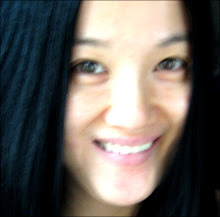China Bird’s Nest designer rails at Olympic “fakenessh”
Ai Weiwei, one of China's foremost architects, said he feels "disgusted" that the $400 million (198 million pound), "Bird's Nest" National Stadium he helped design with Swiss architects Herzog & de Meuron has become a proud symbol of China's development.
"I've already forgotten about it. I turn down all the demands to have photographs with it. I'm not interested," the portly artist told Reuters at a studio in Beijing's northeast suburbs on Friday.
I would feel ashamed if I just designed something for glamour or to show some kind of fake image."
On Wednesday night, Chinese and Olympic officials hosted a 10,000-strong celebration gala with fireworks, dancers and pop stars on Tiananmen Square, scene of a bloody army crackdown on student-led pro-democracy demonstrations in 1989.
Ai's criticism stands in marked contrast to the upsurge in national pride the Olympics has generated, though it does join a chorus of deliberately-timed criticism from mainly foreign rights groups.
The designer, who once smashed a 2,000-year-old Han dynasty vase for art and in 2000 co-curated an exhibition called "F--- Off" in Shanghai, speaks candidly -- and from personal experience.
Ai was raised in a labour camp in China's remote northwestern region of Xinjiang, after his father, Ai Qing -- himself regarded as one of China's finest modern poets -- was purged in the 1950s after being denounced as "an enemy of the state and a rightist".
"I spent five years with him at a labour camp where he cleaned toilets, but these stories become so catchy today," Ai shrugged. "I have my own problems."
He likened China's embrace of the Olympics as a "pretend smile".
"Can a nation be celebrated and be so proud with this ignoring of its past?" Ai asked, sitting on a bench next to one of his works, a distended wooden slab called "Crooked Coffin".
"Can you have the self-confidence to clearly examine yourself, rather than to give this kind of pretend smile on your face... It's this kind of fake smile which is disgusting ... So I hate this."
When asked about what China was trying to hide, Ai said: "There are too many things. The whole political structure, the condition of civil rights ... corruption, pollution, education, you name it."
"Then just say 'let's forget about all this', let's just light some big fireworks, let's have those stupid directors, those people are such opportunists and they just become part of the powerful manipulators because they have no self-consciousness and have such bad taste."
Ai said the 91,000-seat "Bird's Nest" remained a beautiful, if regretful, commission.
"I did it because I love design and the idea of how it would be looked at by others," he said. "I can also do self-criticism."



















